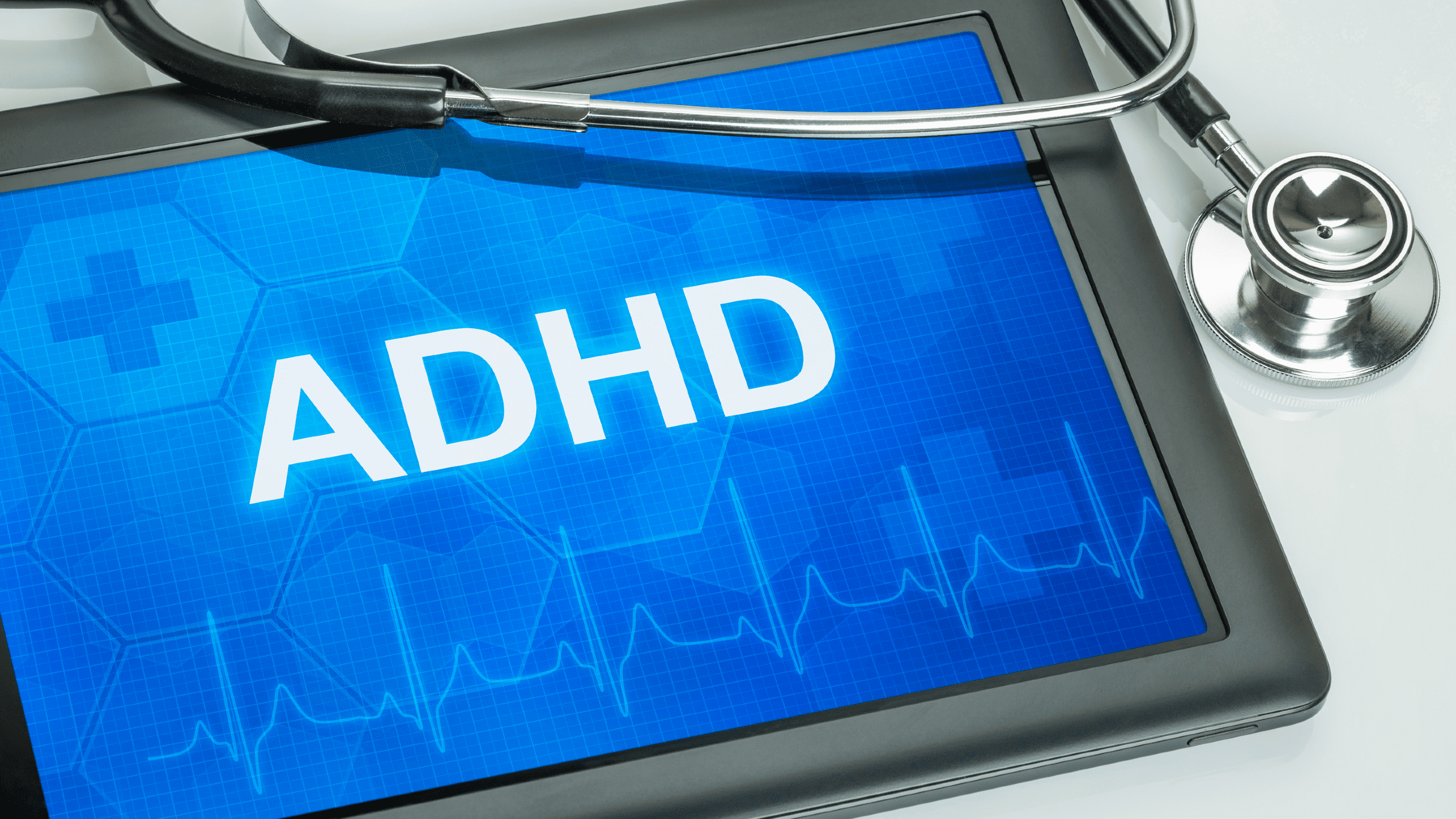Advancements in Screening and Assessment
Personalized Treatment Planning with Health Tech
Thank you for reaching out to Sigma Software!
Please fill the form below. Our team will contact you shortly.
Sigma Software has offices in multiple locations in Europe, Northern America, Asia, and Latin America.

USA

Sweden

Germany

Canada

Israel

Singapore

UAE

Australia

Austria

Ukraine

Poland

Argentina

Brazil

Bulgaria

Colombia

Czech Republic

Hungary

Mexico

Portugal

Romania

Uzbekistan
ADHD is a neurodevelopmental disorder that affects many people around the world and this includes symptoms such as inattention combined with hyperactivity and impulsivity. In recent years, the methods of diagnosing and treating ADHD have undergone remarkable changes, influenced by the growth of health technology. This article examines how the diagnosis of ADHD has changed and how health technology plays a key role in treatment.
Advancements in Screening and Assessment
Personalized Treatment Planning with Health Tech
Over the years, the way ADHD is diagnosed has changed, largely as a result of new research and changes in treatment methods. Known as ‘minimal brain dysfunction’ in the 1960’s, it has undergone many changes until it was listed as a distinct condition in the DSM in 1980. Our knowledge of ADHD has grown considerably as a result of current research and advances in mental health assessment.

Initial assessments focused heavily on detectable behaviors and subjective opinions. ADHD-like symptoms were identified by clinicians using checklists and parent and teacher evaluations. The technique was inconsistent and often led to misdiagnosis.
The establishment of standardized criteria in DSM-III marked a significant shift. These specific standards helped to recognize ADHD and increased consistency of diagnosis across different contexts. The criteria have been further developed by new research and clinical evidence in DSM-IV and DSM-5.
Advances in neuroimaging have had a significant impact on the diagnosis of ADHD. Brain imaging techniques have revealed structural and functional variations in people with ADHD.
New tools and methods have transformed the assessment of ADHD using health technology. Computer-based tests, such as the Continuous Performance Test (CPT), provide clear assessments of attention and impulsivity. Telehealth services allow remote assessment, making specialized care more accessible.
As we move forward, further improvements in genetics and digital health are expected to improve the way we diagnose ADHD. Combining different sources of data and utilizing technology will help us improve the accuracy of diagnosis for people with ADHD.
Techniques for assessing and screening for ADHD have greatly improved our ability to recognize and interpret the disorder. Successful management of ADHD requires timely screening and accurate assessment. Advances and research efforts have resulted in new and detailed tools for assessment and screening.
Caregivers and teachers have been the main contributors to the assessment of ADHD using conventional techniques. Although these perceptions are useful, they can be influenced by many elements and may not be accurate. Advances in technology have developed objective assessments that strengthen the reliability of ADHD symptoms. The Continuous Performance Test (CPT) and the Integrated Visual and Auditory CPT provide structured assessments of executive function and attention. These tests provide quantitative information that helps clinicians fairly analyze cognitive function and track changes over time.
Digital assessments are attracting increasing interest in identifying symptoms of ADHD in both children and adults. Apps and web platforms provide easy ways to assess ADHD behaviors and track symptom intensity. For example, the smartphone app version of the VANDERBILT ADHD DIAGNOSTIC RATING SCALE allows users to collect meaningful information and generate comprehensive reports for treatment providers. Similarly, applications such as the ADHD Symptom Checklist allow users to self-assess and track their symptoms, helping them to proactively engage in the screening process.
Telehealth platforms have emerged as a valuable resource for remote assessment and consultation for ADHD. Particularly in regions with limited access to specialized healthcare services, telehealth offers a lifeline for individuals seeking evaluation and support for ADHD. Using videoconferencing and secure messaging systems, patients can receive comprehensive assessments, diagnostic feedback and treatment recommendations from qualified healthcare professionals. This not only reduces geographical barriers but also increases the efficiency and accessibility of ADHD assessment services.
The integration of multi-modal data sources has enriched our understanding of ADHD and improved diagnostic accuracy. Combining information from different sources, such as genetic markers, neuroimaging data, and behavioral assessments, allows for a more comprehensive assessment of ADHD phenotypes. For example, neuroimaging studies have identified structural and functional differences in the brains of individuals with ADHD, providing insights into the neural underpinnings of the disorder. By integrating these findings with clinical assessments and genetic data, researchers and clinicians can develop more nuanced diagnostic profiles and tailor interventions to individual needs.
Machine learning algorithms and artificial intelligence (AI) techniques hold great promise for improving ADHD screening and assessment. These algorithms can analyze large datasets of behavioral and neuroimaging data, identify patterns, and generate predictive models of ADHD risk and severity. By using AI-driven insights, clinicians can make more informed diagnostic decisions, predict treatment response, and personalize interventions for individuals with ADHD.
Personalized treatment planning for ADHD has been greatly enhanced by the integration of healthcare technology, offering innovative solutions to tailor interventions and optimize outcomes. By using digital platforms, wearable devices, and artificial intelligence (AI) algorithms, clinicians can provide more precise and individualized care, empowering people with ADHD to effectively manage their symptoms.
Health technology has revolutionized the delivery of psychotherapeutic interventions for ADHD, providing accessible and scalable solutions for individuals seeking behavioral support. Cognitive behavioral therapy (CBT) modules delivered through smartphone apps and online platforms offer practical strategies for managing impulsivity, improving executive function, and enhancing self-regulation. In addition to providing evidence-based support, these digital interventions offer the flexibility to receive therapy at convenient times and locations, reducing barriers to access and promoting adherence.
Mindfulness-based interventions have gained popularity in the ADHD community for their ability to improve attentional control, emotional regulation and stress management. Health technology has facilitated the widespread adoption of mindfulness practices through smartphone apps, guided meditation programs, and biofeedback devices. These apps incorporate gamified exercises, breathing techniques and real-time feedback to help people with ADHD develop mindfulness skills and cultivate self-awareness. By integrating mindfulness and biofeedback into personalized treatment plans, clinicians can empower individuals to improve attentional focus, reduce impulsivity and improve overall well-being.
Health technology has introduced gamified therapy and behavioral interventions for ADHD, using the motivational power of game mechanics to engage users and promote behavior change. Gamified apps and online platforms offer interactive exercises, reward systems and progress tracking features to encourage adherence to treatment goals and promote skill development. These interventions capitalize on an individual’s intrinsic motivation and provide a fun and engaging way to learn coping skills, improve time management and enhance organizational skills. By incorporating gamified therapy into personalized treatment plans, clinicians can increase treatment adherence, motivation and satisfaction among individuals with ADHD.
Remote monitoring tools have become an invaluable tool in the management of ADHD, offering a range of innovative solutions for tracking symptoms, medication adherence and behavioral patterns. Using wearable devices, cloud-based data management systems and other digital platforms, remote monitoring tools provide real-time insights, improve treatment adherence and facilitate proactive intervention strategies.
Wearable devices equipped with sensors offer continuous monitoring of physiological parameters and behavioral patterns associated with ADHD. Smartwatches, fitness trackers and biofeedback devices can track heart rate variability, activity levels, and sleep patterns, providing objective measures of ADHD symptoms and treatment response. These wearable devices provide real-time feedback and alerts to help people with ADHD regulate their attention, manage stress and improve self-awareness. In addition, wearable devices can be integrated with cloud-based platforms, enabling seamless data collection, analysis, and sharing between individuals, caregivers and healthcare providers.
Cloud-based data management systems provide secure storage, analysis, and sharing of ADHD-related data, enabling collaboration between individuals and healthcare providers. These systems allow seamless integration of data from multiple sources, including wearable devices, electronic health records (EHRs), and other digital platforms. Clinicians can access real-time updates on patients’ symptoms, medication adherence, and treatment outcomes, facilitating proactive intervention strategies and personalized care planning. In addition, cloud-based platforms offer data visualization tools, trend analysis, and reporting capabilities, enabling clinicians to make informed decisions and optimize therapeutic outcomes for people with ADHD.
Digital journals and tracking tools allow people with ADHD to easily monitor their symptoms and mood changes. By using these web- and mobile-based tools, individuals can document their encounters, track their progress, and identify triggers that can exacerbate ADHD symptoms. Through the use of digital journals and self-tracking tools, individuals can gain insight into their ADHD and consequently manage their condition while communicating their preferences and needs to healthcare providers.
Online community groups and social networks provide important encouragement and support for people with ADHD. Through chat rooms and online communities, people can reach out to others with the same condition and discuss ways to cope, while encouraging each other. Through online networks, people find a sense of belonging and validation that helps to reduce the feelings of isolation and stigma associated with ADHD. By connecting virtually, groups can provide opportunities to share resources, access learning materials, and participate in group activities about ADHD and its management.
Advances in health technology have redefined the diagnosis and treatment of ADHD. Healthcare professionals now manage ADHD through new screening methods, personalized treatment strategies, and remote monitoring tools. Advances in wearable devices, digital journals, virtual support groups, and remote coaching have made it possible for people with ADHD to monitor their symptoms and track themselves on treatment. Such advances mean people are getting involved in their treatment and taking more steps toward staying healthy.
1. How can healthcare software improve ADHD diagnosis?
Healthcare software enhances ADHD diagnosis by providing objective and data-driven assessments. Tools like the Continuous Performance Test (CPT) and digital screening apps allow for more accurate measurements of attention, impulsivity, and other symptoms. These technologies reduce reliance on subjective opinions, increasing diagnostic accuracy.
2. What are the benefits of using apps and digital platforms for ADHD treatment?
Apps and digital platforms offer easy access to therapy, behavior management tools, and symptom tracking. They allow individuals to engage in therapy on their schedule, providing CBT modules, mindfulness exercises, and self-assessment tools. These features make treatment more flexible, personalized, and scalable.
3. What are the main features of healthcare software for ADHD?
Key features include digital screening tools, telehealth consultation platforms, AI-driven diagnostics, remote monitoring through wearables, gamified therapy, and integration of multi-modal data (e.g., genetic, neuroimaging). These solutions offer comprehensive care and improve symptom management.
4. What type of development team is needed for healthcare software for ADHD?
A development team typically includes software developers, UX/UI designers, healthcare professionals, data scientists (for AI features), and security experts. Collaboration between tech experts and ADHD specialists ensures the app meets clinical needs and complies with healthcare regulations.
5. Can AI and machine learning help in ADHD diagnosis?
Yes, AI and machine learning can analyze large datasets to detect ADHD patterns and predict symptom severity. This helps clinicians make more informed decisions, personalize treatment plans, and improve the accuracy of both diagnosis and treatment effectiveness.

Andrii's expertise primarily encompasses the Healthcare industry. Bolstered by extensive knowledge in the Information Security domain and ML/AI. Andrii Pastushok is committed to guaranteeing clients receive an exceptional product development experience.
Linkedin profileAdvancements in Screening and Assessment
Personalized Treatment Planning with Health Tech


A Software Bill of Materials (SBOM) is becoming one of the most important documents in modern software development. Still, many organizations struggle to create...

As cloud sovereignty becomes a strategic priority across the EU, Sigma Software applies its deep expertise and extensive experience to contribute to the develop...

Data is everywhere, yet its payoff isn't always there. Many IT leaders struggle with scattered analytics, rising storage costs, and unclear returns.We face...
Would you like to view the site in German?
Switch to German